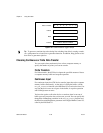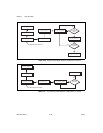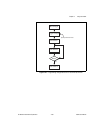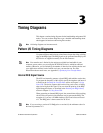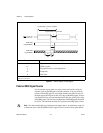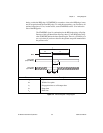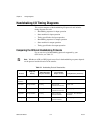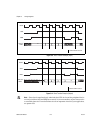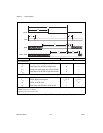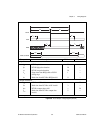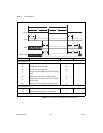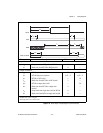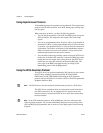
Chapter 3 Timing Diagrams
© National Instruments Corporation 3-5 653X User Manual
In order for the 653X device to communicate with peripheral devices in
handshaking mode, it is important to verify that:
• You are using complementary protocols. For example, use
8255-emulation protocol with long-pulse protocol.
• The ACK/REQ polarity are the same. For example, 8255 emulation
is active low only, so the other device must use the long-pulse protocol
and have active low ACK/REQ polarity.
Using the Burst Protocol
Burst protocol is a synchronous, or clocked, protocol. In addition to using
the ACK and REQ signals like the other handshaking protocols, in burst
protocol, the 653X device and the peripheral device share a clock signal
over the PCLK line.
The 653X device asserts the ACK signal if it is ready to perform a transfer.
If the peripheral device also asserts the REQ signal indicating it is ready,
a transfer occurs on the rising edge of the PCLK signal. See Figures 3-3
and 3-4 for examples of burst protocol transfers. Dashed lines indicate
when data is transferred.
Synchronous Protocol
Burst Programmable Neither (level REQ) Clock speed Burst
* Asynchronous protocols can compensate automatically to cable length, yet for synchronous protocols, you need to select
an appropriate speed for your cable when configuring your device.
Select a delay of at least the following:
• 0 for a typical cable up to 1 m
• 1 (70 ns) for a typical cable up to 5 m
• 2 (140 ns) for a typical cable up to 15 m long
Table 3-1.
Handshaking Protocol Characteristics (Continued)
Protocol
REQ/ACK
Polarity
Which REQ Edge
Requests Transfer
Where the
Programmable
Delay Is Located
Complementary Protocol(s)



